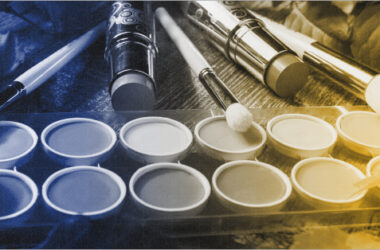As the medical device industry in India continues to evolve and expand, the importance of Product Liability Insurance becomes increasingly apparent. With advancements in technology and the growing demand for healthcare products, ensuring the safety and quality of medical devices is paramount. Product Liability Insurance serves as a crucial safeguard for manufacturers, distributors, and other stakeholders in the event of unforeseen risks or liabilities associated with their products. This article provides a comprehensive overview of Product Liability Insurance and its importance for medical devices in India. By understanding the nuances of Product Liability Insurance, stakeholders can mitigate risks and uphold safety standards in the dynamic landscape of the Indian medical device industry.
Overview of Product Liability Insurance
Product Liability Insurance is essential for businesses operating in industries where there is a risk of harm or injury caused by their products. This insurance provides financial protection against claims arising from defective products that cause bodily injury or property damage to consumers or users. Product Liability Insurance covers legal expenses, compensation payouts, and related costs incurred in defending against such claims. By having Product Liability Insurance, businesses can mitigate the financial risks associated with product-related lawsuits and maintain their reputation in the market. Moreover, understanding the scope and coverage of Product Liability Insurance helps companies proactively manage product risks and ensure compliance with regulatory requirements, thereby fostering consumer trust and confidence in their products.
Product Liability Insurance can be an essential safeguard for manufacturers, distributors, and sellers of medical devices against claims arising from the use of their products. Product Liability Insurance covers the cost of defending against claims of injury or damage caused by the use of a medical device. It typically covers claims arising from defects in the design, manufacturing, or labelling of a medical device and also covers the cost of compensating the injured party if the claim is successful. The amount of coverage required depends on the type of medical device being manufactured and sold.
Coverages Provided in Product Liability Insurance
Product Liability Insurance in India typically offers coverage for a range of risks and liabilities associated with the manufacturing, distribution, and sale of products. Some common coverages provided in Product Liability Insurance Policies in India include:
- Legal Expenses: Coverage for legal fees and expenses incurred in defending against product liability claims, including court costs, attorney fees, and settlement payments.
- Compensation for Bodily Injury or Property Damage: Protection against claims for bodily injury or property damage caused by defective products, including medical expenses, lost wages, and property repair or replacement costs.
- Product Recall Costs: Coverage for expenses related to product recalls, including notification costs, transportation expenses, and disposal costs incurred to remove defective products from the market.
- Manufacturing Defects: Protection against claims arising from defects in the design, manufacturing, or labelling of products, including faulty components, improper assembly, or inadequate warnings or instructions.
- Failure to Perform: Coverage for claims resulting from the failure of products to perform as intended or advertised, including claims of inefficacy, malfunction, or failure to meet performance standards.
- Third-Party Liability: Coverage for liabilities arising from claims by third parties, including customers, distributors, retailers, or other parties who suffer harm or losses due to the use or consumption of products.
- Crisis Management Expenses: Coverage for expenses incurred in managing reputational damage or public relations crises resulting from product recalls, safety incidents, or adverse publicity.
- Defence Costs and Settlements: Coverage for legal defence costs and settlement payments associated with product liability claims, including judgments or settlements reached in court or through alternative dispute resolution mechanisms.
It’s important for businesses to carefully review and customize their Product Liability Insurance Policies to ensure adequate coverage for their specific risks and exposures. Additionally, businesses should stay informed about regulatory requirements and industry standards to maintain compliance and minimize potential liabilities associated with their products.
Risk Assessment and Management Best Practices for Medical Devices Businesses
- Identifying Potential Risks
Medical devices are designed to improve patient outcomes, but they can also pose potential risks. To ensure patient safety, it is important to identify potential risks associated with the use of medical devices. Risk assessment involves a systematic approach to identifying potential hazards and assessing the likelihood and severity of harm that may result from exposure to those hazards.
The process of risk assessment involves a thorough analysis of the device’s design, intended use, and potential users. This analysis should take into account the device’s intended use, the patient population, and the environment in which it will be used. It is also important to consider the potential risks associated with the manufacturing process, including the use of materials, the manufacturing process itself, and the quality control measures in place.
- Strategies for Risk Mitigation
Once potential risks have been identified, it is important to develop strategies for risk mitigation. This involves implementing measures to reduce the likelihood and severity of harm that may result from exposure to potential hazards.
One strategy for risk mitigation is to design devices that incorporate safety features, such as alarms and fail-safe mechanisms. Another strategy is to provide clear instructions for use and to ensure that users are properly trained on the safe and effective use of the device.
Quality control measures are also important for risk mitigation. These measures should be in place throughout the manufacturing process to ensure that the device is manufactured to the highest quality standards and meets all necessary safety and performance requirements.
In addition to these strategies, it is important to have a comprehensive risk management plan in place. This plan should outline procedures for monitoring and addressing potential risks throughout the life cycle of the device, including post-market surveillance and reporting of adverse events.
Importance of Product Liability Insurance for Medical Device Manufacturers in India
Product Liability Insurance holds significant importance for medical device manufacturers in India due to several key reasons:
Financial Protection: Medical device manufacturers face the risk of costly lawsuits arising from product defects, malfunctions, or failures. Product Liability Insurance provides financial protection by covering legal expenses, compensation payouts, and other related costs associated with defending against such claims. This protection helps manufacturers avoid substantial financial losses that could otherwise jeopardize their operations or viability.
Risk Mitigation: The complexity of medical devices and the potential for adverse outcomes pose inherent risks for manufacturers. Product Liability Insurance helps mitigate these risks by transferring some of the financial burdens associated with product-related liabilities to the insurance provider. By sharing the risk with the insurer, manufacturers can better manage their exposure to potential losses and focus on innovation and business growth.
Regulatory Compliance: Compliance with regulatory requirements is crucial for medical device manufacturers to ensure the safety and efficacy of their products. Product Liability Insurance may be a regulatory requirement in some jurisdictions or may be strongly recommended by regulatory authorities. Having adequate insurance coverage demonstrates a commitment to compliance and risk management, enhancing the manufacturer’s reputation and credibility within the industry.
Consumer Confidence: Product Liability Insurance plays a vital role in maintaining consumer confidence in medical devices. Knowing that manufacturers have insurance coverage in place provides reassurance to healthcare professionals, patients, and consumers about the manufacturer’s commitment to product safety and accountability. This confidence can positively impact market acceptance and adoption of medical devices, driving business growth and competitiveness.
Product Innovation and Development: Effective risk management through Product Liability Insurance allows medical device manufacturers to allocate resources towards product innovation and development initiatives. By mitigating the financial risks associated with product liabilities, manufacturers can invest in research and development efforts to enhance product quality, performance, and safety standards. This continuous innovation is essential for staying competitive in the dynamic healthcare industry and meeting evolving market demands.
In summary, Product Liability Insurance is indispensable for medical device manufacturers in India as it provides essential financial protection, risk mitigation, regulatory compliance, consumer confidence, and support for product innovation. By understanding the importance of Product Liability Insurance and investing in adequate coverage, manufacturers can navigate the complexities of the industry with greater confidence and resilience.
Frequently Asked Questions
- Explain the typical claims handling process in Product Liability Insurance for medical devices in India
When a medical device manufacturer faces a liability claim, it is important to have a clear understanding of the claims process in Product Liability Insurance. The following steps are typically involved:
- Notification: The manufacturer must notify the insurance company as soon as possible after becoming aware of a potential claim. This allows the insurer to begin investigating the claim and providing guidance to the manufacturer.
- Investigation: The insurer will investigate the claim to determine its validity and the extent of the manufacturer’s liability. This may involve reviewing medical records, interviewing witnesses, and consulting with experts in the field.
- Evaluation: Based on the investigation, the insurer will evaluate the claim and determine whether to settle or defend against the claim in court. If the claim is settled, the insurer will negotiate a settlement amount with the claimant.
- Defence: If the claim is not settled and goes to court, the insurer will provide legal representation for the manufacturer. The insurer will work to defend the manufacturer against the claim and minimize any financial damages.
- Resolution: Once the claim is resolved, the insurer will close the claim and provide the manufacturer with a report detailing the outcome of the claim and any lessons learned. BimaKavach helps in the product liability claim settlement process.
2. Are manufacturers of medical devices required to have liability insurance in India?
There is currently no legal requirement for manufacturers of medical devices to have liability insurance in India. However, many manufacturers choose to purchase Product Liability Insurance to protect themselves against potential claims.
3. What are some common claims made under product liability for medical devices?
Common claims made under product liability for medical devices include claims for design defects, manufacturing defects, and failure to warn. These claims may arise if a medical device is found to be unsafe or if it causes harm to a patient.








